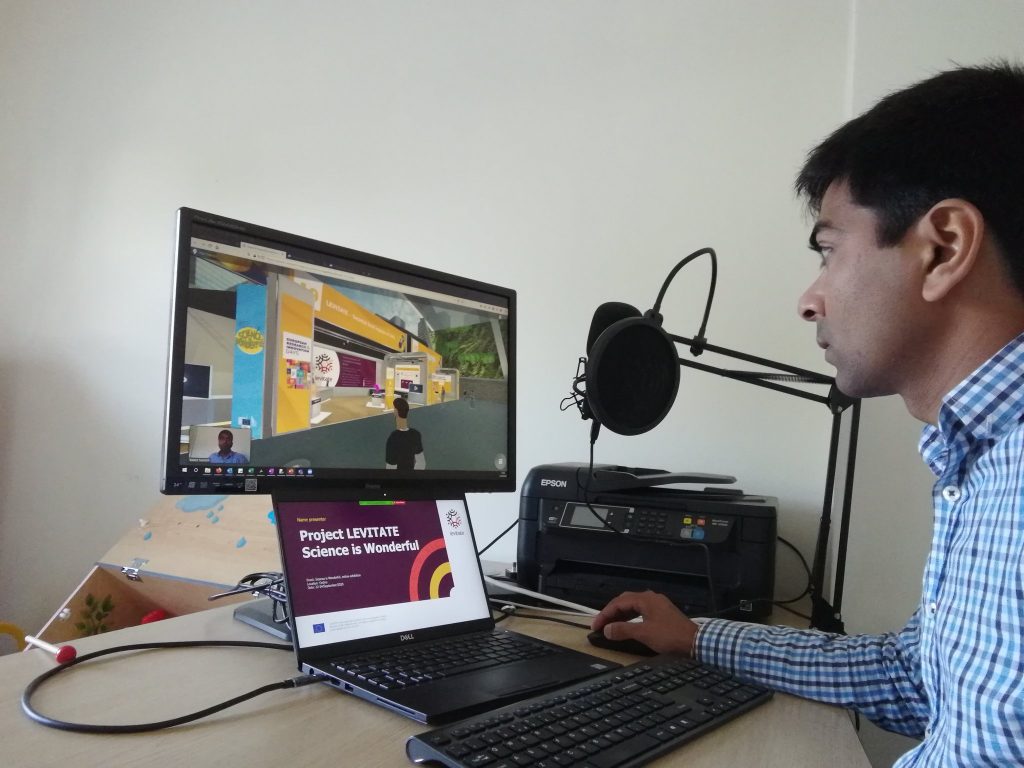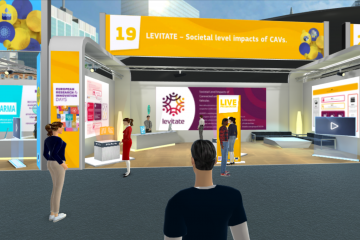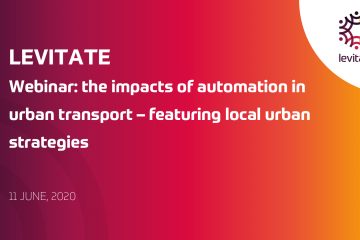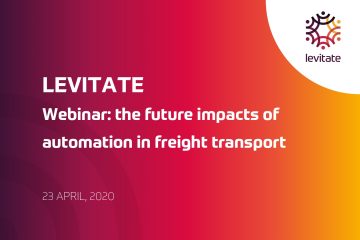The COVID-19 pandemic has halted the world nearly to a standstill. There has been a massive economic, social and welfare impact and the common factor is mobility. In LEVITATE, we are investigating the impacts of Connected and Automated Transport Systems (CATS) on our society. COVID-19 has been catastrophic event at world level, but we must learn from this tragedy and understand the implications for CATS era.
Urban Transport
The introduction of point to point, anywhere to anywhere or last-mile automated shuttle services maybe beneficial during a pandemic such as COVID-19 crisis. Highly automated shuttles (level 4 onwards) will remove the need for a driver and hence the risk of infection. Furthemore, a more frequent service may be offered, to accommodate the reduced passenger capacity of vehicles due to social distancing, without the growth in operational costs associated with the driver. In order to minimise the possibility of contamination and the spread of the virus, the supply of antiseptic materials for all users and workers, proper air conditioning and regular disinfection of the shuttles will need to be guaranteed.
Conversely, the reallocation of road space and modal priority, in favour of pedestrians and cyclists, could present a challenge to automated shuttles due to their cautious nature in the presence of these active modes whose movements are hard to predict by automated vehicle technology. This could significantly impact on the speed and overall efficiency of the shuttles, at least until the point where level 5 shuttles offering greater ‘intelligence’ than humans are mature and widely rolled out.
Passenger Transport
A personal passenger car that is manually driven in today’s scenario is no different to a personal automated passenger car in the future scenario. However, in a shared-car model, the vehicle could contribute to the spread COVID-19 if the vehicle is not thoroughly cleaned. Therefore, it will be paramount that the shared cars are cleaned regularly and that it is clear whose responsibility it is to keep the cars clean. It is probable that the shared-car usage will be discouraged in similar circumstances to COVID-19 and perhaps public behavior might shift towards active travel mode and personal car usage. More space allowed for active travel will increase car traffic as capacity for them is reduced. This could be mitigated by introducing staggered shift working pattern (perhaps even combine with alternate days) for those involved in less essential work that cannont be done by staying at home.
As mobility is restricted, there has been natural decline in traffic incidents, but it is arguable that crash severity would increase due to increased speeding. Automated vehicles without ability to alter the speeding behaviours, and associated to reckless driving, will benefit in minimising the safety impacts due to driving behavioural changes resulting from open roads.
Freight transport
During the COVID-19 crisis, major commercial facilities such as shops, markets, restaurants have either shut or people have stayed away due to the health risk. Therefore, demand in e-commerce or food delivery service has increased significantly. For example, Carrefour reported that the delivery of vegetables has increased by 600% during the lockdown period in China [1]. In addition, contactless delivery has become a standard or even requirement in many countries to protect delivery personnel and customers.
This overlaps with the main vision of future logistics concepts, which foresees the automated distribution of goods and even the handover process without human interaction. However, contactless handover requires infrastructure, for example the current state-of-the-art foresees physical internet boxes (supplier side) or white label parcel boxes (customer side). During the COVID-19 crisis, contactless delivery has been performed without either of these. Currently, most people are at home and therefore, the now applied procedure to place the goods in front of the customer’s door, ringing the bell, and walking away works well and (small) failures are accepted by the vendor.
Although the current lockdown and curfew will finally come to an end soon, we are aware that pandemics such as COVID-19 may strike the globe again. Therefore, further developments with respect to automated contactless handover technologies must go on. For a full rollout of automated delivery, we do not know yet who will win the race: automated handover infrastructure or level 5 automated transport. In the end, both will be necessary for automated delivery of goods.
[1] Campaign. COVID-19 media and consumption impacts in China: By the numbers. Retrieved online on 2020-04-28: https://www.campaignasia.com/article/covid-19-media-and-consumption-impacts-in-china-by-the-numbers/458225.






